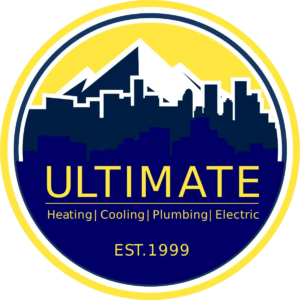The thermostat is the control center for your home’s temperature and, by extension, your home’s comfort.
If you suspect something’s wrong with your thermostat, don’t delay. A faulty thermostat can lead to temperature fluctuations in your home and cause your HVAC system to consume extra energy.
Depending on the issue, you can either replace the thermostat yourself or call in an expert.
Step 1 to Replace a Thermostat: Identify the Problem
The problem will tell you what it will take to replace your thermostat. Common problems include:
Inaccurate Temperatures
If your thermostat says 72 and you’re bundled up in blankets, your thermostat may not be reading your home’s temperature accurately. Check for other factors like settings, batteries, and location. There may still be other culprits at play here, like a dirty air filter. If you decide to replace the thermostat, make sure that you continue to monitor the air temperature vs. the thermostat to make sure it’s not an issue with another piece of your HVAC system.
System Doesn’t Turn On/Off Correctly
Your thermostat should respond to temperature changes almost immediately once you change temperature settings. Often, thermostats produce a small clicking sound when you adjust them. If you don’t hear the sound and your system doesn’t respond to changed settings, the thermostat needs replacement. The heating or cooling system should also turn on/off when it reaches the desired temperature. If that is not happening, it could mean the thermostat is faulty and needs replacement.
Interface Looks Off
When the thermostat interface looks off, for a regular thermostat, you can generally check the batteries and replace them if nothing changes. However, if you have a smart thermostat, you may want to troubleshoot with a technician before replacing it.
Step 2 to Replace a Thermostat: Choosing the Right Replacement
Once you determine it is time to replace your thermostat, the next step and most critical is to find a thermostat compatible with your current system. Avoid purchasing any thermostat available on the market without considering how it will work with the existing system. If unsure how to go about buying the right one, make sure to consult an expert.
Use this opportunity also to evaluate your home energy priorities. Do you want a WIFI thermostat? Are you looking to upgrade to a smart HVAC system? Do you want to be able to control your system from anywhere in the world? List all those priorities —they will help you narrow down to the right replacement.
Step 3 to Replace a Thermostat: Choose DIY vs. Hiring a Pro
Replacing a thermostat is pretty easy, and you can do that yourself or hire a professional. But if it is a must to change wiring, consider hiring a skilled technician. Otherwise, you might end up making the wrong connections to the new thermostat. Here are more reasons why you should let a pro handle the entire thermostat replacement:
Upgrades. If you’re using a smart thermostat for the first time, you will likely need fresh wiring. Setting this up wrong could destroy your HVAC system and is best left to a professional.
Safety. While thermostat units can be small, they can also cause a lot of damage. There is a risk of electrocution that comes with installing yourself.
Stress. A pro will know how to troubleshoot installation problems, from standard to obscure. While it may cost a little extra to bring in a pro, it might be worth it when it comes to your time and effort spent.
DIY Steps to Replace a Thermostat
If you’ve considered your options and decided to replace your thermostat yourself, follow these steps.
Power off your HVAC
Remove thermostat
Identify your wires. If upgrading to a smart system, fresh wiring may be necessary.
Install the new base/wires. Remember to get a pro for the new wiring.
Mount new thermostat
Turn your HVAC system back on
Configure the new thermostat. Make sure to follow the manufacturer’s instructions.
Troubleshoot
A thermostat is the locus of control for your home’s temperature, and a bad or old one can make your home uncomfortable and cause high electric bills.
Fortunately, if your home HVAC system is inspected regularly, thermostat and HVAC problems can be detected early and resolved.
Learn more about our maintenance membership program to ensure your HVAC system keeps you healthy and comfortable for the life you’re in your home.
Call to schedule your HVAC maintenance hbspt.cta._relativeUrls=true;hbspt.cta.load(7049993, ‘17242153-0d81-4c8b-8d51-38dff5faed7e’, {“useNewLoader”:”true”,”region”:”na1″});

